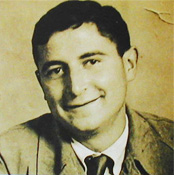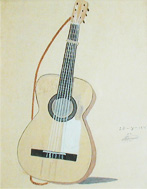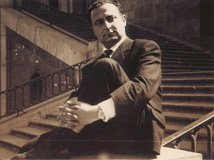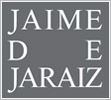Jaime de Jaraíz, biography
Jaime de Jaraíz was born to life, as Jaime García Sánchez, on April 23, 1934 in the Extremaduran town of Jaraíz de la Vera, a name that over time became official as the first surname of the painter, after the approval of the Ministry of Justice. . Jaime is the youngest of the brothers after Víctor and María, born in the same town. As a child he attends the school of his town and at the age of 10 he enters the Baccalaureate as a free student at the Institute of Plasencia. The following two courses, 1945-47, he studied in Sigüenza, Alcarria, with the Claretian missionaries. He returns to Jaraíz and his parents buy him his first guitar that he has played since then in a self-taught way; Meanwhile, he continues drawing and painting, a hobby that had accompanied him since his early childhood.

In 1950 he won the first prize for painting sponsored by Caja de Plasencia in this city, with a painting entitled “Joy and wine”. This award will be the trigger for Jaime’s future life. Thus, the parish priest, Don Marcelino Giraldo, would commission the very young painter to create a large-format canvas of the Virgin of Fátima, of recognized devotion at that time in Extremadura and in the rest of Spain, for the church of San Miguel; and in the city council they grant him a scholarship so that he begins his studies at the School of Arts and Crafts in Cáceres.
In 1957 he went to Paris, where he visited its great museums, including the Louvre. The same year that he finished his studies at the San Fernando School of Fine Arts, he exhibited at the Holl of Madrid’s Palacio de la Música. In 1960 Jaime García Sánchez will adopt the pseudonym of Jaime de Jaraíz, which will become official in 1979 by approval of the Ministry of Justice, both for him and his descendants.
A year later he exhibited at the Circulo Medina and at the Sala Toison, both in Madrid; offering in the first a guitar recital, musically illustrating some of his exhibited paintings. In 1962 he exhibited in Madrid’s Sala Alcón and in Bilbao’s Galería Arte. The following year he does it in Zaragoza and repeats in Bilbao. In 1966 his work can be visited in Valladolid, and he moves to South Africa to exhibit his work in Johannesburg, at the Alter Gallery. A year later he exhibits in the US, he will do it in Denver (Colorado) and later in Dallas, Los Angeles, and New York, the latter being the scene of the theft of one of his paintings with contempt for the rest of the collective exhibition. In this same year he will be named corresponding academician of the Real de San Telmo de Málaga.
 1969 will be an important year in the artistic work of Jaime de Jaraíz, as he discovers a new technique and way of painting, consisting of chromatic divisionism, a discovery that will serve as the basis for his later pictorial work. His exhibitions continue in Mexico, at the Firenze gallery, and in Spain at the Eureka gallery in Madrid. That same year he denounced the Spanish Painters Society Gallery in a Madrid court for the falsification of his paintings. In 1979 his painting “Ristra de Ajos” was stolen from the Pepe Restaurant in Madrid and he exhibited in Jaén and Castellón de la Plana. On October 18, 1980, the new room of the Diputación “El Brocense” was inaugurated in Cáceres with an exhibition by Jaime de Jaraíz, which was a resounding success. It is estimated that more than 15,000 people passed through it. The Provincial Councils of Cáceres and Badajoz acquired two paintings for their provincial museums of Fine Arts.
1969 will be an important year in the artistic work of Jaime de Jaraíz, as he discovers a new technique and way of painting, consisting of chromatic divisionism, a discovery that will serve as the basis for his later pictorial work. His exhibitions continue in Mexico, at the Firenze gallery, and in Spain at the Eureka gallery in Madrid. That same year he denounced the Spanish Painters Society Gallery in a Madrid court for the falsification of his paintings. In 1979 his painting “Ristra de Ajos” was stolen from the Pepe Restaurant in Madrid and he exhibited in Jaén and Castellón de la Plana. On October 18, 1980, the new room of the Diputación “El Brocense” was inaugurated in Cáceres with an exhibition by Jaime de Jaraíz, which was a resounding success. It is estimated that more than 15,000 people passed through it. The Provincial Councils of Cáceres and Badajoz acquired two paintings for their provincial museums of Fine Arts.
On May 22, 1983, he was unanimously appointed full academician of the Royal Academy of Extremadura of Letters and Arts. In that same year he inaugurated the Caja Madrid Art Gallery in Barcelona, with excellent criticism from the Catalan media and an influx of public of more than 30,000 visitors. On May 6, 1984, he entered the Royal Academy of Extremadura as a full member. Read his speech at the Yuste Monastery where he is answered by the writer Pedro Lorenzo.

In 1986 his Extremeña suite was premiered at the San Francisco de Cáceres Auditorium, performed by the NOVA SCHOLA PRATENSIS orchestra. With this premiere he recorded his third album. The Home of Extremadura in Barcelona pays tribute to him this year and the resident of the Generalitat, Jordi Pujol, presents him with a plaque commemorating the act. The Montecelli Gallery in Gijón will be the stage where 88 of his paintings can be seen in the same year.
In 1992, after a long absence, he returned to his homeland, doing so in Badajoz, Mérida and Almendralejo. On the occasion of the Seville Exhibition, the Junta de Extremadura invites Jaime de Jaraíz to its pavilion. In the following years he continues to exhibit in different cities such as Madrid, Cáceres or Valladolid, a city with more exhibitions in Jaime’s extensive work. On June 10, 2000, the universal premiere of his Carlos V rides again takes place in the Yuste Monastery and in Jaraíz de la Vera. The last 5 years have been devoted almost exclusively to the preparation of this book.
Excerpt of the biography of Jaime de Jaraíz
Alejandro García Galán



